What is square foot gardening? Experts explain this space-saving method for growing veggies
Square foot gardening is ideal for raising crops in smaller plots – here's how to try it at home

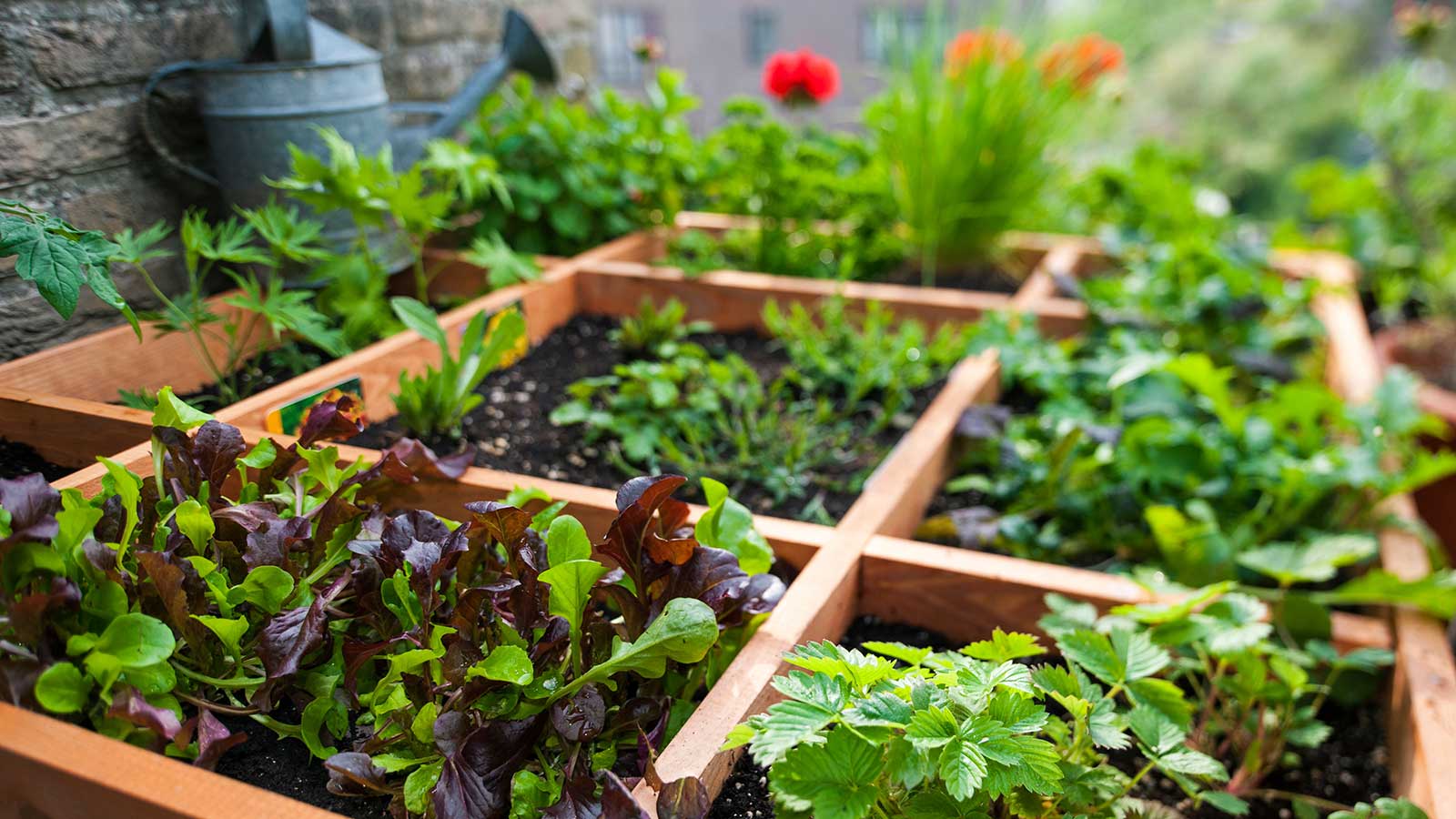
Are you looking for a compact, orderly, and easy way to grow crops at home? Square foot gardening (or SFG for short) may be the solution.
As the name implies, the method involves planting in sections a square foot in size, mapped out with a grid in a raised bed. It was started by Mel Bartholomew, an American engineer and gardener, who released a book all about it in 1981. Sure, that's a good few years ago now, but the approach is still a brilliant way to start a vegetable garden.
Charmaine Peters, a vegetable-growing expert from Arden, says the method is 'an extremely efficient way of gardening', and great for home gardeners with limited space. It also makes weeding and watering your garden more manageable, she adds. We've gathering expert advice on how to get started with square foot gardening.

This method is great for creating a neat and orderly look
How to set up your raised bed for square foot gardening
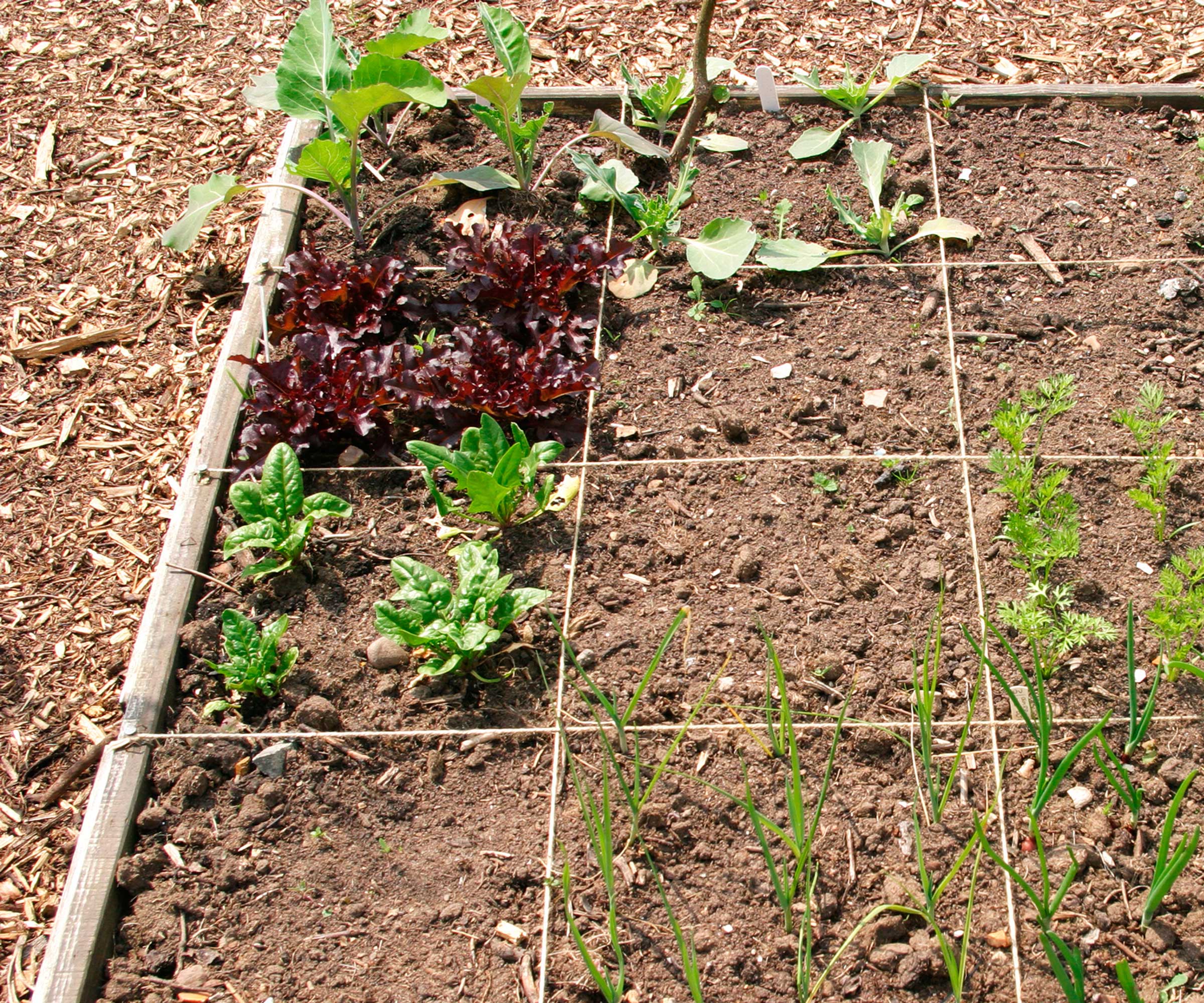
You can use twine to create your grid
First, find a sunny spot. Jen McDonald from Garden Girls says, 'Fruiting vegetables, like tomatoes, peppers, cucumbers, and squash, require six to eight hours of direct sunlight per day. Lettuce, arugula, and greens require four to six. Herbs need at least two to four hours per day.'
Then, you'll need to install your raised bed. A 4ft by 4ft box is usually recommended, which can be divided into 16 sections. Jen says, 'For SFG, the beds should be at least 12in high. We have found the most comfortable height to be 2ft.'
Charmaine suggests laying weed-control fabric inside the bed. This Hoople weed-suppressant fabric from Amazon is a popular pick.
Then, add your soil mix. 'Ensure you have well-draining, fertile soil that is suitable for the plants you want to grow,' says Autumn Hilliard-Knapp of Perfect Plants Nursery. 'Consider amending the soil with compost or other organic matter to improve its quality.'
Design expertise in your inbox – from inspiring decorating ideas and beautiful celebrity homes to practical gardening advice and shopping round-ups.
Next, create a grid of squares with metal, bamboo, wood, or string stretched horizontally across the bed to serve as a visual tool, Charmaine instructs. 'This will help you plant your seeds the right distance apart.'
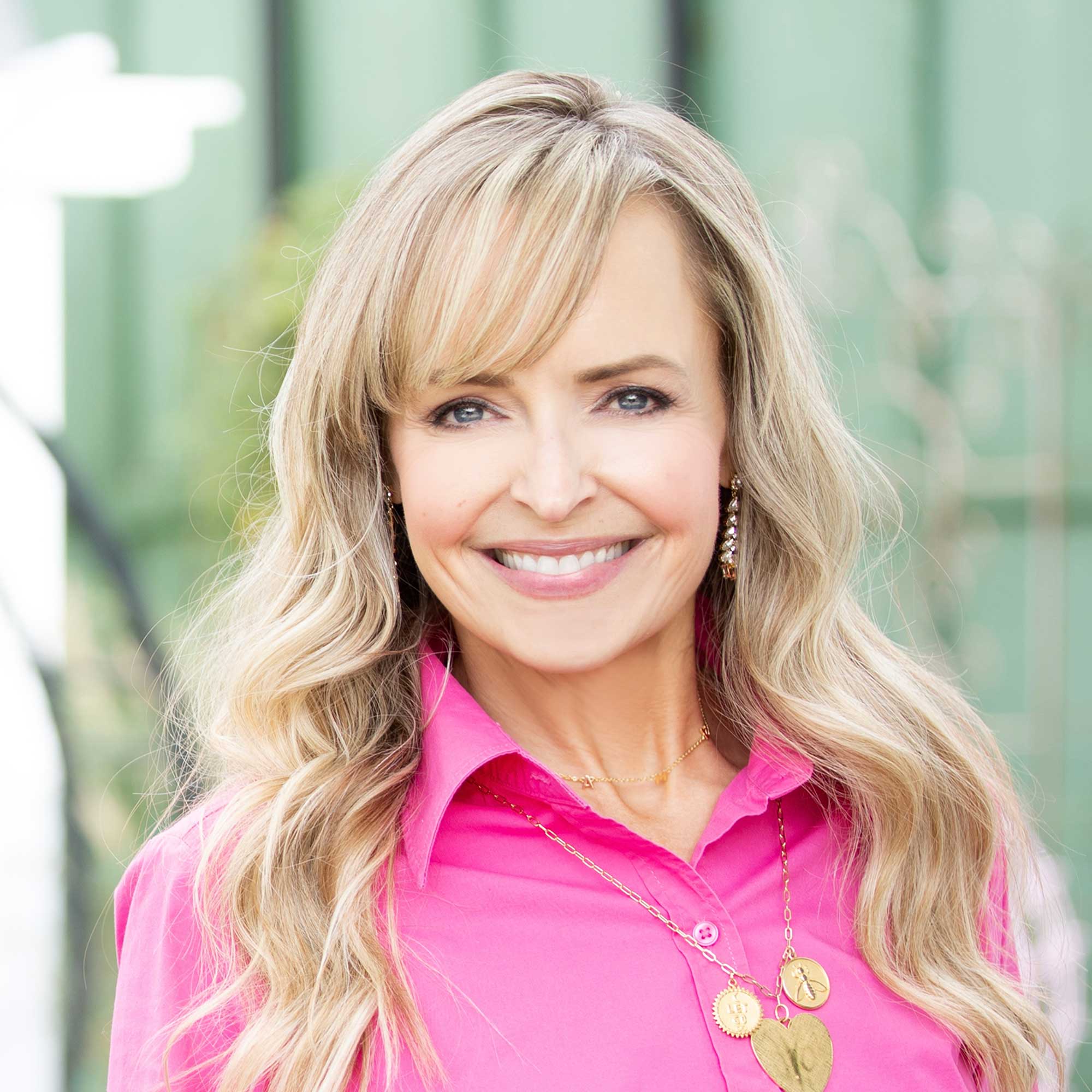
Jen McDonald is a garden expert and co-founder of Garden Girls, LLC, based in Houston, TX. With 14 raised garden beds and 400 square feet of garden space, Jen grows cut flowers to peanuts, amaranth to okra, and everything in between.
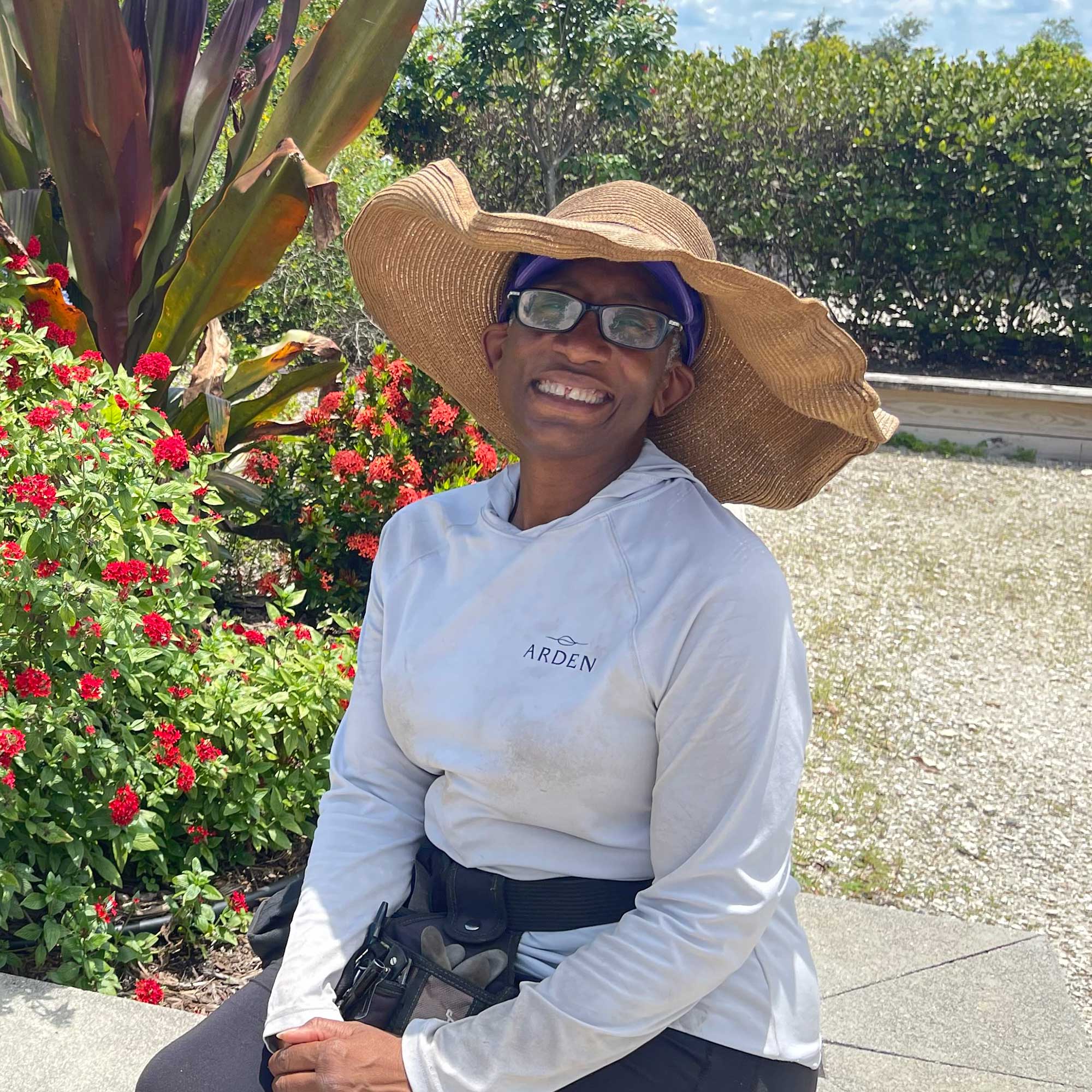
Charmaine Peters is the farm director at Arden, an Agrihood community in Wellington, Florida. She manages the community’s five-acre working farm, as well as a monthly farm-share program for residents.

Autumn is a horticulture specialist and marketing professional at Perfect Plants Nursery. With four years of experience in the horticulture industry, she has developed a passion for helping people create beautiful indoor and outdoor spaces to enjoy. Her expertise in horticulture encompasses a broad range of activities, including plant care and selection, landscape design, and maintenance.
How to plant your raised bed for square foot gardening
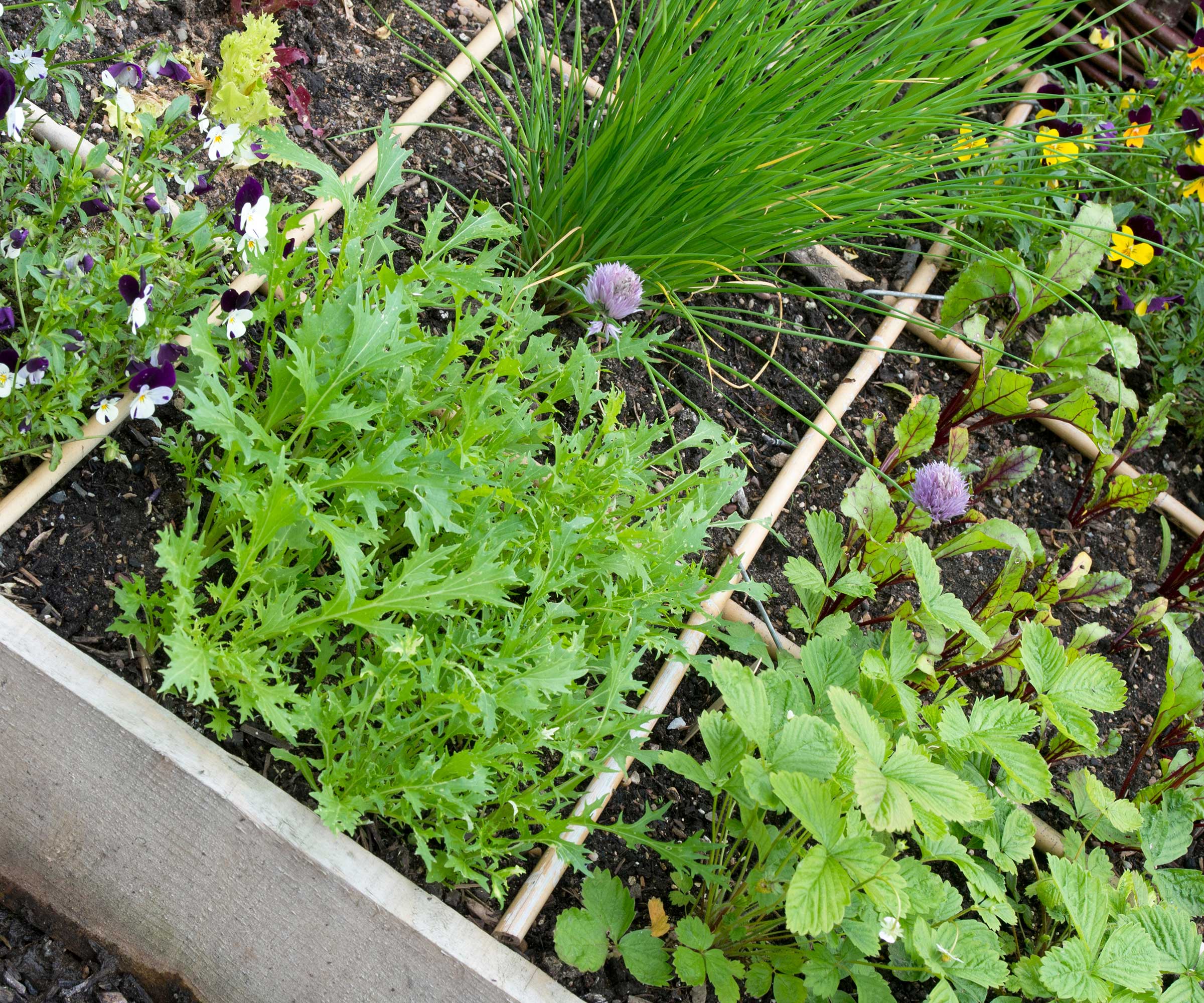
Get the spacing right for each crop variety
How to fill each square depends on the size of the plants you're growing. You can read the seed packets to learn the recommended spacing between plants, Charmaine says.
Jen McDonald shares some guidelines below on the spacing for growing vegetables using the square foot gardening method:
- 1 per square foot: Larger herbs (such as rosemary, lavender, and sage), tomatoes, peppers, eggplants, and cucumber.
- 4 per square foot: Herbs such as chives, cilantro, parsley, dill, thyme, oregano, and basil, as well as lettuce, garlic, Swiss chard, and strawberries.
- 9 per square foot: Bush beans, beetroot, and spinach.
- 16 per square foot: Radishes, carrots, and multiplying onions.
'Seedlings may look the same in the early stages, so labeling the squares will help you identify the crop,' says Charmaine.
These bamboo labels from Amazon are well-rated and at a great price.
'You can also create a garden map as a handy reference to know what seeds are planted in each square,' Charmaine continues. 'Remember to have a clear point of differentiation, since the square shape may make it difficult to apply your map otherwise.
'You should also consider planting taller crops, such as tomatoes or trellised cucumbers, on the north side of your raised bed to prevent them from shading shorter plants,' she adds. 'This ensures that all plants receive sufficient sunlight for optimal growth.'
Once planted, water your garden as needed and make sure to pull weeds and remove any dead or diseased plants regularly, says Autumn.
FAQs
What are the drawbacks to square foot gardening?
'The drawback to this method is if you want to plant things like watermelon, corn, and squash, you are limited in the amount of space,' says Jen McDonald from Garden Girls. For these larger plants, you’ll want to do one plant per two square feet with room to vine over the edge, or add a trellis for vertical growth, she suggests.
Autumn Hilliard-Knapp of Perfect Plants Nursery notes how close plant spacing can make it easier for pests and diseases to spread. 'Regularly inspect your plants, and promptly address any pest or disease issues,' she advises. 'Consider using natural pest control methods or companion planting to deter pests.'
Can you apply square foot gardening to your borders?
Anna Ohler, the owner of Bright Lane Gardens nursery, says, 'Square foot gardening methods can also be applied to certain landscape projects, as long as you're looking for a tidy and orderly landscape design.
'You would apply the same general rule – separate your garden into grid squares, then plant a certain number of flowers or plants in each square according to their planting guidelines. This is very helpful when planting annual flowerbeds that require a large number of flowers per section.'
If you are growing perennials, plan to remove any physical gridlines once your plants are in the ground, she suggests. 'Any twine or stakes left behind could inhibit a plant's ability to grow out.'
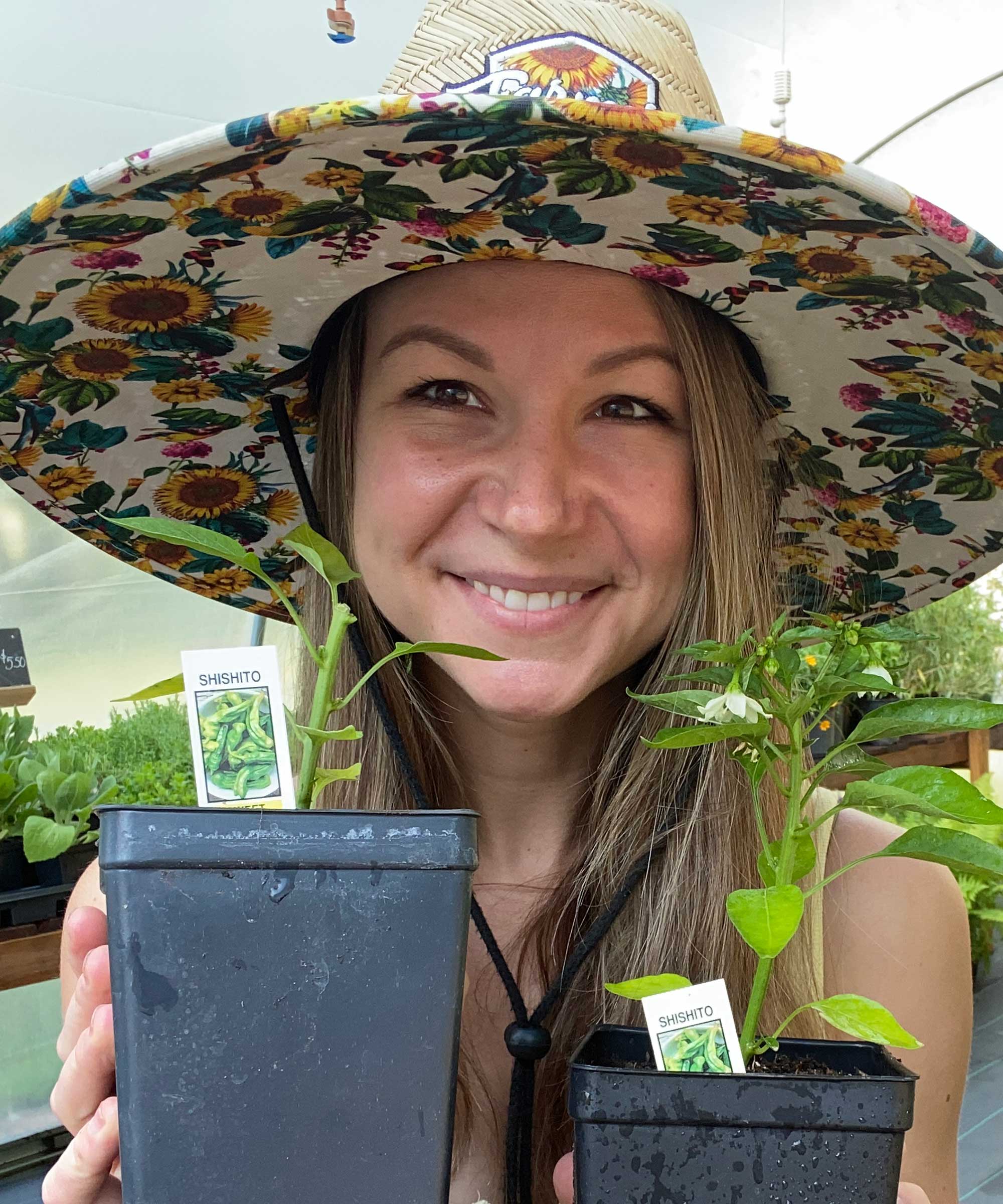
Anna is an avid plant hobbyist and the owner and operator of Bright Lane Gardens, a boutique plant nursery in Northern Michigan. With over a decade of experience in gardening and landscaping, she takes every opportunity to share her knowledge on all things plant-related.
If you're growing in a small space, there are other useful approaches to consider, too. These include growing vegetables in pots – a good option for balcony gardening.

Holly started writing about gardening five years ago, and she is a regular contributor to Homes & Gardens. She has also written many gardening features for Woman & Home and Real Homes, too. She has previous experience as a professional gardener, where she helped to plant and maintain private gardens. Holly has also looked after allotment plots over the years and loves to grow her own flowers and veggies from seed. In her spare time, she enjoys visiting local gardens, botanical drawing, and tending to her ever-growing collection of houseplants.